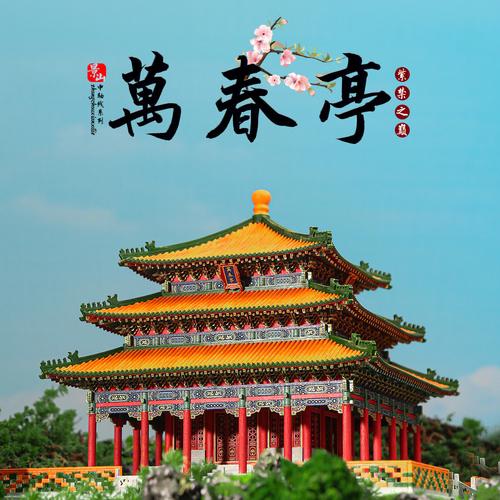
The Design of Wanchun Pavilion and Qianqiu Pavilion
Introduction
Nestled within the serene landscapes of Chinese gardens, pavilions stand as elegant embodiments of harmony between nature and architecture. Among the most celebrated are the Wanchun Pavilion (万春亭) and Qianqiu Pavilion (千秋亭), renowned for their distinct yet complementary designs. This essay delves into the architectural intricacies of these two pavilions, exploring their unique characteristics and highlighting the principles that govern their timeless appeal.
Architectural Features
Location and Setting
-
Wanchun Pavilion: Typically found situated on an elevated point within the garden, offering panoramic views of the surrounding scenery. Its elevated position symbolizes longevity and enduring prosperity, aligning with its name "Wanchun," meaning "ten thousand springs" or eternity.
-
Qianqiu Pavilion: Often nestled amidst lush greenery, beside a tranquil pond or a cluster of rocks, creating a sense of secluded intimacy. Unlike Wanchun Pavilion's expansive outlook, Qianqiu Pavilion, meaning "a thousand autumns," encourages introspection and contemplation of the passage of time.
Structure and Form
-
Wanchun Pavilion: Usually boasts a square or circular base, representing stability and completeness. Its multi-layered roof, often octagonal or hexagonal, rises to a central point, symbolizing an ascent to the heavens. The eaves curve gracefully upwards, imbuing the structure with a sense of lightness and dynamism.
-
Qianqiu Pavilion: Tends to be more modest in scale, often rectangular or square in shape, with a single-layered roof. Its design emphasizes simplicity and understated elegance. The roof may feature gentle slopes and slightly upturned corners, hinting at the dynamism found in Wanchun Pavilion, but in a more subdued manner.
Materials and Decoration
-
Wanchun Pavilion: Employs richly ornamented and vibrantly painted elements. Red pillars, intricately carved beams, and glazed roof tiles featuring auspicious motifs are commonly used. The decorative elements often incorporate symbols of longevity, such as cranes, pine trees, and peaches.
-
Qianqiu Pavilion: Favors a more subdued palette and minimalist ornamentation to blend seamlessly with its natural surroundings. It may feature unpainted wooden elements, subtly patterned roof tiles, and simple latticework. The overall effect is one of refined simplicity and quiet beauty.
Symbolism and Meaning
-
Wanchun Pavilion: Represents auspiciousness, longevity, and a celebration of life's fullness. Its elevated position and expansive views invite visitors to embrace the vastness of time and the ever-changing beauty of nature.
-
Qianqiu Pavilion: Offers a space for contemplation, reflection, and appreciation of the ephemeral nature of life. Its secluded setting and understated elegance encourage visitors to connect with their inner selves and find solace in the tranquility of the natural world.
Conclusion
The Wanchun Pavilion and Qianqiu Pavilion, though distinct in their architectural expressions, are both masterful embodiments of the principles that underpin traditional Chinese garden design. They demonstrate a profound understanding of how form, space, and natural elements can be harmoniously intertwined to create spaces that nourish the soul and inspire contemplation. Their enduring appeal lies in their ability to transcend mere physical structures and become vessels for profound cultural and philosophical meaning.
Q&A
Q1: What is the primary difference in the location of Wanchun and Qianqiu Pavilions?
A1: Wanchun Pavilions are typically situated on elevated points for expansive views, while Qianqiu Pavilions are nestled amidst greenery for secluded intimacy.
Q2: How do the decorative elements differ between the two pavilion styles?
A2: Wanchun Pavilions feature vibrant colors and intricate carvings with auspicious symbols, while Qianqiu Pavilions utilize a subdued palette and minimalist ornamentation for a sense of understated elegance.
Q3: What symbolic meanings do these pavilions embody within the context of Chinese garden design?
A3: Wanchun Pavilions represent auspiciousness, longevity, and a celebration of life's fullness. In contrast, Qianqiu Pavilions offer a space for contemplation, reflection, and appreciation of life's ephemeral nature.
note: This return of all, without the author's permission, may not be reproduced